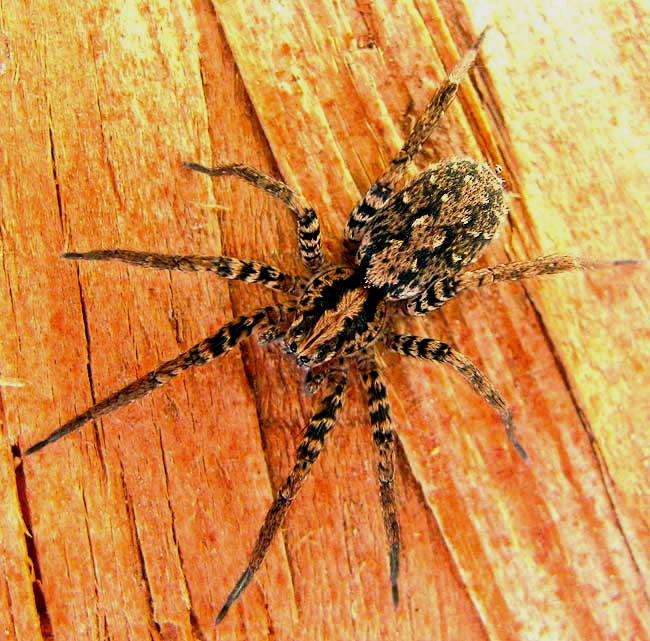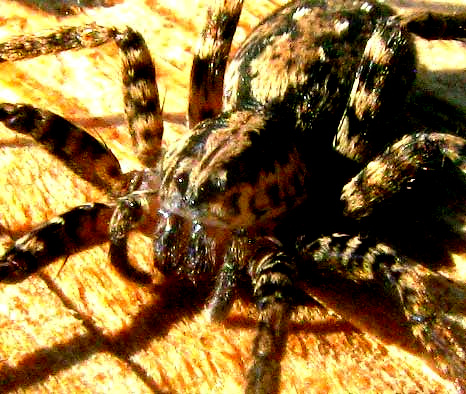Excerpts from Jim Conrad's
Naturalist Newsletter

from the September 15, 2013 Newsletter issued from the Frio Canyon Nature Education Center in the valley of the Dry Frio River in northern Uvalde County, southwestern Texas, on the southern border of the Edwards Plateau; elevation ~1750m (~5750 ft); N29.62°, W99.86°; USA
WANDERING SPIDER
A fair-sized, hairy spider turned up beneath plywood lying on the ground, so I took a picture and sent it to volunteer identifier Bea in Ontario. That's him above, and a front view showing front-looking pairs of eyes is seen below:

I'd assumed we had a wolf spider, of which many species are known, but Bea somehow came up with the idea that it might belong to the Wandering Spider Family, the Ctenidae, which I'd never heard of. Given that lead, I lucked upon a 1999 paper by W D Sissom in "Entomological News" entitled "New Records Of Wandering Spiders From Texas, With A Description Of The Male Of Ctenus Valverdiensis (Araneae : Ctenidae)" The paper can be downloaded for free in PDF format at http://biostor.org/reference/76615.
Judging from pictures in that paper we may have LEPTOCTENUS BYRRHUS, found only in southwestern Texas and adjacent Mexico. I say "may" because often it's hard to tell with spiders without dissecting them. But if you compare pictures you'll see that the markings are nearly exactly the same.
Not much is known about this species. Some members of the family are considered "highly aggressive and venomous nocturnal hunters," according to the family's Wikipedia entry, but our spider did nothing but patiently allow our pictures to be taken, then when I got too close suddenly darted off as if shot from a cannon.
Wikipedia also points out that Wandering Spiders have distinctive longitudinal grooves atop and at the rear of their oval carapaces, carapaces being the top of a spider's front main body segment. In our pictures such a groove seems to be clearly visible.